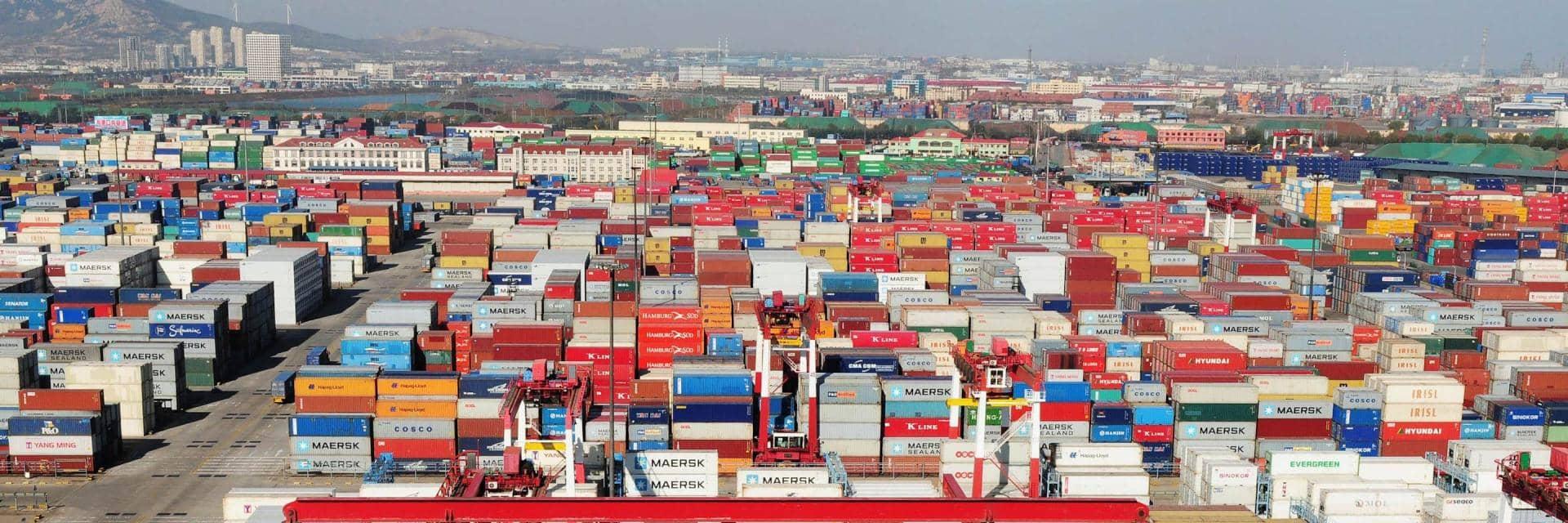
Investors can win the trade war
09 May 2019
Constructive economic data reports, consensus-beating corporate earnings and accommodative central banks have encouraged investors that the fundamentals remain in place to support the rally in risk assets seen this year.
Volatility has been falling and clients have been implementing strategies to take advantage of late-cycle opportunities, partly on expectations that many of the dark macroeconomic clouds that have been overhanging markets will dissipate through the year.
US-China trade fears
In the era of social media, the geopolitical complexion can rapidly change. President Trump’s 5 May trade tweet sent a shockwave through financial markets (China’s CSI 300 index fell 5.8%). The tweet forced analysts to question the assumption that a peaceful resolution to the trade war between the US and China was inevitable.
The intervention came as an unwelcome surprise for investors after a barrage of reports in recent weeks, from supposedly credible sources, claiming that tangible progress has been made on many key areas on the negotiation.
As we know, the US has been pushing China to buy more of its products, open up its markets to US companies, relax its rules on the forced transfer of technology and protect intellectual property rights.
President Trump, buoyed by solid domestic growth data and the backdrop of the 2020 presidential election campaign, said: “The trade deal with China continues, but too slowly as they attempt to renegotiate. No!”. He threatened to increase existing tariff rates and impose new levies on a broader range of exports from China. China is the world’s largest exporter- it exports around $2 trillion each year, $600bn of which is bound for the US.
Effect on growth
Clearly the implementation of higher tariffs would significantly impact China’s growth profile. We estimate that a 25% tariff on $200bn of China’s exports would drag down gross domestic product (GDP) expansion by 30-50 basis points over a 12-month period, with exports down by 3-5 percentage points.
An additional 25% levy on the remaining exports could reduce China’s GDP growth by another 0.5%. Although, in this worst case scenario, we would expect Chinese authorities to try and mitigate the impact by increasing fiscal and monetary policy support while allowing its currency to depreciate.
The US is not immune from an escalation of the trade dispute. Trade wars push up consumer and producer prices, thereby reducing demand for products and services and increasing costs for US businesses.

Investment implications
Our base case scenario is that economic pragmatism will eventually prevail. This in turn should facilitate the slow removal of tariffs and reduce trade and policy uncertainty. Should the sell-off in equity markets deepen it could be a good entry point for an asset class we think will outperform in the medium term. Investors should consider combining US exposure with secular growth opportunities in emerging markets.
Related articles
Investments can fall as well as rise in value. Your capital or the income generated from your investment may be at risk.
This document has been issued by the Investments division at Barclays Private Banking and Overseas Services (“PBOS”) division and is not a product of the Barclays Research department. Any views expressed may differ from those of Barclays Research. All opinions and estimates included in this document constitute our judgment as of the date of the document and may be subject to change without notice. No representation is made as to the accuracy of the assumptions made within, or completeness of, any modeling, scenario analysis or back-testing.
Barclays is not responsible for information stated to be obtained or derived from third party sources or statistical services, and we do not guarantee the information’s accuracy which may be incomplete or condensed.
This document has been prepared for information purposes only and does not constitute a prospectus, an offer, invitation or solicitation to buy or sell securities and is not intended to provide the sole basis for any evaluation of the securities or any other instrument, which may be discussed in it.
Any offer or entry into any transaction requires Barclays’ subsequent formal agreement which will be subject to internal approvals and execution of binding transaction documents. Any past or simulated past performance including back-testing, modeling or scenario analysis contained herein does not predict and is no indication as to future performance. The value of any investment may also fluctuate as a result of market changes.
The value of any investment may also fluctuate as a result of market changes.
Neither Barclays, its affiliates nor any of its directors, officers, employees, representatives or agents, accepts any liability whatsoever for any direct, indirect or consequential losses (in contract, tort or otherwise) arising from the use of this communication or its contents or reliance on the information contained herein, except to the extent this would be prohibited by law or regulation..
This document and the information contained herein may only be distributed and published in jurisdictions in which such distribution and publication is permitted. You may not distribute this document, in whole or part, without our prior, express written permission. Law or regulation in certain countries may restrict the manner of distribution of this document and persons who come into possession of this document are required to inform themselves of and observe such restrictions.
The contents herein do not constitute investment, legal, tax, accounting or other advice. You should consider your own financial situation, objectives and needs, and conduct your own independent investigation and assessment of the contents of this document, including obtaining investment, legal, tax, accounting and such other advice as you consider necessary or appropriate, before making any investment or other decision.
THIS COMMUNICATION IS PROVIDED FOR INFORMATION PURPOSES ONLY AND IS SUBJECT TO CHANGE. IT IS INDICATIVE ONLY AND IS NOT BINDING.